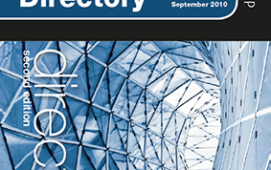Real-Time Innovations (RTI) recently held a seminar ‘Straight Talk About Low-Latency, The Value of a Millisecond’ which highlighted the relationship between the technical minutiae of low latency systems and the business issues related to electronic trading. IntelligentTradingTechnology.com caught up with John Akbari, Director of Financial Market Business Development at RTI, to find out some more about what was discussed, and to shed more light on the technicalities.
IntelligentTradingTechnology.com: How does latency directly impact the business of exchanges and brokerages?
John Akbari: The emphasis on “who has the best price?” and “who put that best price out first?” pushes the boundaries on price and time in a very measurable, exposed manner. Exchanges now compete on managing and relaying information on the order book.
Execution speeds among brokers, a key component of their value proposition, is keenly dependent on the speed or latency of not only their software, but the connections to exchanges. Tabb Group estimates that in 2008, 16% of all US institutional equity commissions are exposed to latency risk, totaling $2 billion in revenue.
ITT: With market data rates increasing, how is RTI working to minimize latency while sustaining data throughput?
JA: RTI is bringing into financial services the same software used in over 400 mission-critical applications in the US Navy, embedded medical systems, satellite control, and other defense applications. RTI dynamically exchanges descriptive information about the financial data being delivered, to minimize the biggest bottleneck of all: the overhead of packing and unpacking data between producers and consumers. We logically divide the network based on types of data being distributed and the interest of subscribers. Data is filtered by the actual values of the fields (bid, ask and the like), minimizing network load and CPU utilization. Best of all, all this power can be modified to achieve precisely the kind of speed and behavior each trader needs.
It’s all about delivering only the data needed, where needed, when needed.
ITT: A term that has increased usage is jitter. Can you explain what jitter is and what is the business relevance of it?
JA: Jitter refers to how consistently the software infrastructure performs. At market open, market close, and in response to significant news events, RTI is proving to be the market leader in responding to extreme system stress. For many high frequency arbitrage strategies, jitter is almost more important than latency, because significant money is made when volatility spikes. RTI handles slow consumers, noisy networks that lose data, and other extreme conditions.
ITT: And how is RTI working to minimize jitter in its messaging product?
JA: That’s one of our secret sauces. RTI designs and benchmarks with a keen focus on latency and jitter. We’ve been at it since 1996. For further information on RTI, or to find out when their next webinar is on this topic, visit www.rti.com/markets/financial-services.html or contact John Akbari directly at john.akbari@rti.com.
Subscribe to our newsletter




